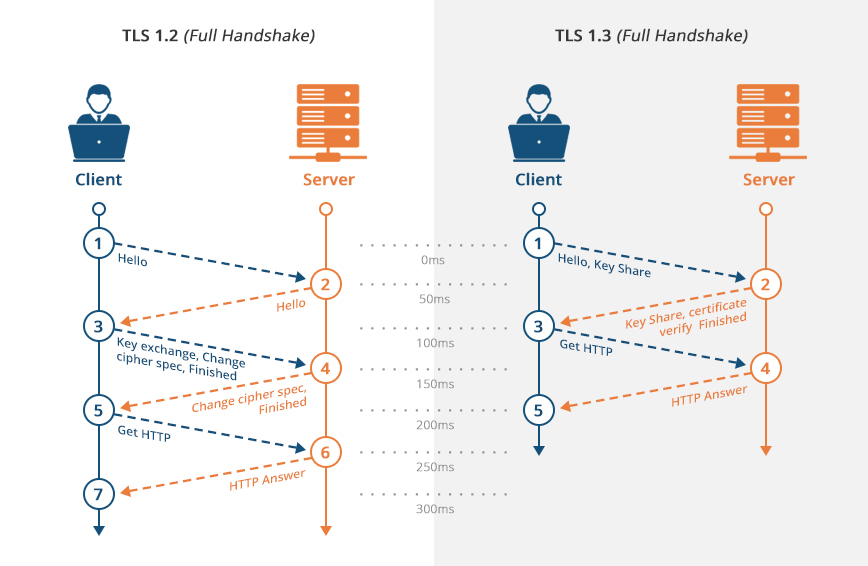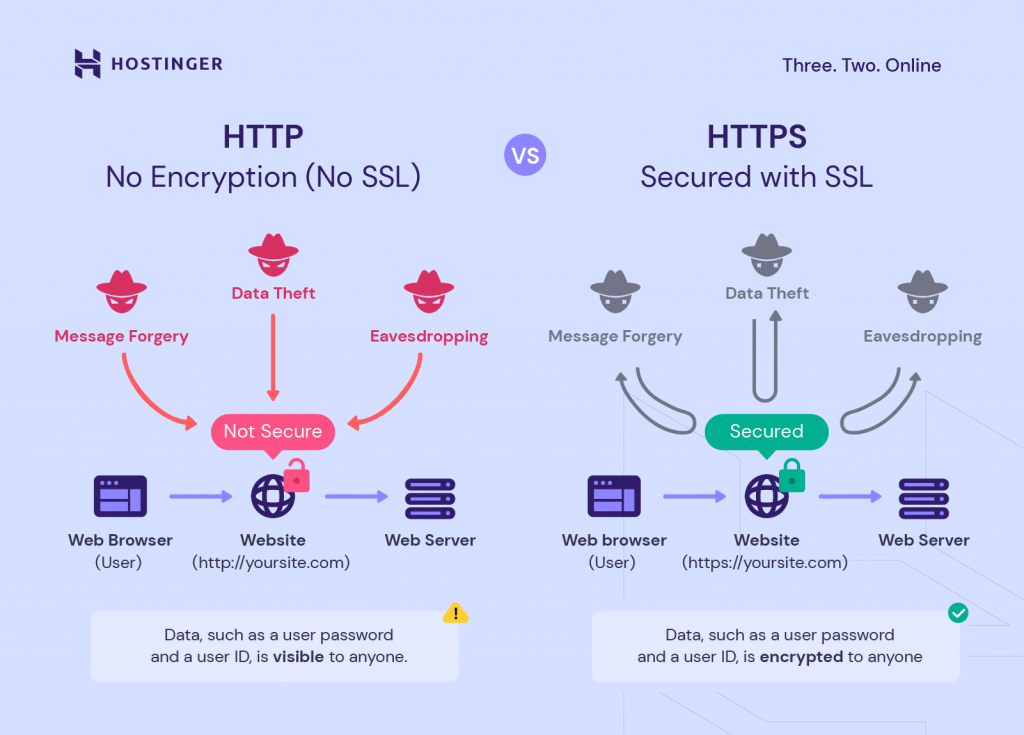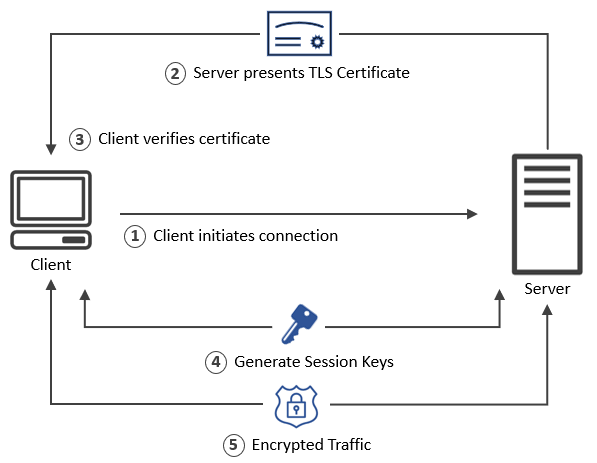Unravel the mystery of transport layer security and discover how it keeps your online data safe from prying eyes.

Image courtesy of via DALL-E 3
Table of Contents
Welcome, young readers! Today, we are going to talk about something super important for staying safe on the internet. It’s called Transport Layer Security, or TLS for short. TLS helps keep our information safe and protected while we use the internet. Imagine it like a secret code that only you and your trusted friends can understand!
What is TLS?
Picture TLS as your online bodyguard. It’s a special technology that makes sure your data, like your messages and passwords, stay private and secure when you’re surfing the web. With TLS, you can feel safe knowing that your information is shielded from prying eyes.
Why Do We Need TLS?
Think of the internet as a vast, open space full of digital highways where your information travels. Without TLS, this information could be like a postcard anyone can read as it moves from one place to another. TLS acts as a special lock and key, keeping your data hidden from anyone who shouldn’t see it. It’s like having your own fortress guarding your online activities!
The Magic of Encryption
What is Encryption?
Encryption is like a secret code that keeps your messages safe from anyone who’s not supposed to see them. When you send information over the internet, like passwords or messages, encryption scrambles it into a code that can only be read by the person it’s meant for. It’s like hiding your message in a secret language that only you and your friend know how to translate.
How TLS Uses Encryption
Now, imagine that every time you visit a website or send an email, your information travels through many stops before reaching its destination. TLS uses encryption to create a secure tunnel for your data to travel through. It’s like putting your message in a special lockbox before sending it out, making sure it stays safe from prying eyes along the way. So, thanks to encryption and TLS, your information stays protected and only the intended recipient can unlock your message.
How TLS Works
Transport Layer Security (TLS) works by establishing a secure connection over the internet to ensure our data is protected from prying eyes. Let’s dive into how TLS creates this safe environment for our online activities.
The TLS Handshake
When you visit a website that uses TLS, your device and the website’s server perform a special dance known as the TLS handshake. During this handshake, they exchange encryption keys to set up a secure connection. It’s like sharing secret codes to lock and unlock a treasure chest full of your data.
Data Transfer
Once the TLS handshake is complete and the secure connection is established, your data can travel back and forth between your device and the website without fear of being intercepted. This encrypted tunnel shields your information from cyber snoops, ensuring that your online activities remain private and secure.
TLS in Everyday Life
Have you ever wondered how websites keep your information safe when you’re browsing online? That’s where Transport Layer Security (TLS) comes in. When you visit a website, TLS ensures that your data, like your name, address, or any other personal information you enter, is encrypted. This means that it’s turned into a secret code that only the website and your device can understand. So, the next time you’re on your favorite site, remember that TLS is working behind the scenes to protect your privacy!

Image courtesy of cyberhoot.com via Google Images
Online Shopping
When it’s time to treat yourself to something new online, TLS plays a crucial role in keeping your credit card information secure. Before you enter your payment details on a shopping website, TLS encrypts this sensitive data to prevent cybercriminals from intercepting it. This encryption ensures that your financial information stays confidential and that you can shop online with peace of mind. So, thanks to TLS, online shopping can be both convenient and safe!
Secure Communication
Whether you’re sending an email to a friend, chatting on a messaging app, or sharing files with your classmates, TLS works tirelessly to safeguard your communications. By encrypting the messages you send and receive, TLS ensures that your conversations remain private and protected from prying eyes. So, the next time you share something online, remember that TLS is there to keep your communications secure!
The History of TLS
Before Transport Layer Security (TLS) became the standard for internet security, there was its predecessor, Secure Sockets Layer (SSL). SSL was developed in the 1990s to provide a secure connection between web servers and browsers. It used encryption to protect data during transmission, ensuring that sensitive information like passwords and credit card details remained confidential.
From SSL to TLS
As technology evolved, vulnerabilities in SSL became apparent, leading to the development of Transport Layer Security (TLS). TLS, which is based on the foundation of SSL, addressed these weaknesses and implemented stronger encryption algorithms and security protocols. Over time, TLS has become the industry standard for secure data transmission on the internet, offering improved security and privacy for users worldwide.
Versions of TLS
Transport Layer Security (TLS) has undergone several versions, with each update bringing improvements to the encryption protocol. Let’s delve into the different versions of TLS and why these updates are crucial for maintaining internet safety.

Image courtesy of www.hostinger.com via Google Images
TLS 1.0 to TLS 1.2
Initially, TLS 1.0 was introduced to enhance the security offered by its predecessor, Secure Sockets Layer (SSL). However, as cyber threats evolved, TLS 1.1 and TLS 1.2 were developed to address vulnerabilities present in the earlier versions. These iterations strengthened the encryption algorithms and authentication methods used in securing data transmission over the internet.
TLS 1.3
The most recent version, TLS 1.3, represents a significant leap forward in TLS technology. It introduces improvements in performance, security, and privacy. TLS 1.3 reduces latency during the handshake process, making secure connections faster and more efficient. Additionally, it removes outdated cryptographic algorithms to enhance overall security against potential exploits.
TLS and Hacking
When we browse the internet or send messages online, there are sneaky individuals out there looking to steal our information. These sneaky individuals are called hackers. They try to break into websites or intercept our messages to get sensitive data like our passwords or credit card numbers. Thankfully, Transport Layer Security (TLS) acts like a shield against these hackers.
TLS creates a secure tunnel for our data to travel through, encrypting it so that even if a hacker manages to intercept it, they won’t be able to understand the information. Some common types of hacking attacks that TLS can help prevent include:
- Man-in-the-Middle Attacks: Hackers try to intercept the communication between you and a website, posing as the middle person without either side knowing.
- Brute Force Attacks: Hackers try to guess your password by trying different combinations until they hit the right one. TLS encryption makes it nearly impossible for them to read your password even if they intercept it.
- Phishing Attacks: Hackers send you fake emails or messages pretending to be from a trusted source, trying to trick you into revealing your personal information. TLS helps verify the authenticity of websites and messages, keeping your data safe.
Staying Safe
While TLS is a powerful tool in keeping our data safe, it’s crucial to always stay updated with the latest version of TLS. Just like how we update our devices to protect against new viruses, updating TLS helps protect against new hacking threats.
By keeping TLS updated, you’re adding more shields to your online safety armor, making it harder for hackers to breach your defenses. So, remember to look out for those TLS updates and stay one step ahead of the hackers!
Conclusion
In conclusion, Transport Layer Security (TLS) plays a crucial role in ensuring our safety online. By providing a secure way to transmit data over the internet, TLS helps protect our information from falling into the wrong hands.

Image courtesy of www.csa.gov.sg via Google Images
Key Points Recap
We’ve learned that TLS uses encryption to code our messages, keeping them safe from prying eyes. It establishes a secure connection through a process called the handshake, allowing for data transfer without the risk of interception. TLS is used in various aspects of our online experience, such as when we visit websites, shop online, and communicate through email and messages. Understanding the history of TLS, from its predecessor SSL to the latest version TLS 1.3, helps us appreciate its evolution and continuous improvement. By staying updated and informed about TLS, we can better protect ourselves from common hacking attacks and ensure our online safety.
Want to turn these SEO insights into real results? Seorocket is an all-in-one AI SEO solution that uses the power of AI to analyze your competition and craft high-ranking content.
Seorocket offers a suite of powerful tools, including a Keyword Researcher to find the most profitable keywords, an AI Writer to generate unique and Google-friendly content, and an Automatic Publisher to schedule and publish your content directly to your website. Plus, you’ll get real-time performance tracking so you can see exactly what’s working and make adjustments as needed.
Stop just reading about SEO – take action with Seorocket and skyrocket your search rankings today. Sign up for a free trial and see the difference Seorocket can make for your website!
Frequently Asked Questions (FAQs)
What Happens if a Website Doesn’t Use TLS?
When a website doesn’t use Transport Layer Security (TLS), it means that the information you send and receive on that website is not encrypted. This puts your data at risk because hackers could potentially intercept and read the information you share, such as your login details, personal information, or credit card numbers. Without TLS, there is no secure connection to protect your data, making it easier for cybercriminals to steal your sensitive information.
Can TLS Be Broken?
While TLS is a powerful tool for securing data, no system is completely invulnerable to attacks. Hackers are constantly trying to find new ways to break through security measures, including TLS. However, TLS is designed to be very secure, and breaking it would require a significant amount of computing power and time. By keeping your TLS protocols up to date and following best practices for internet security, you can significantly reduce the risk of a successful attack. It’s important to stay vigilant and take precautions to protect your data online.







